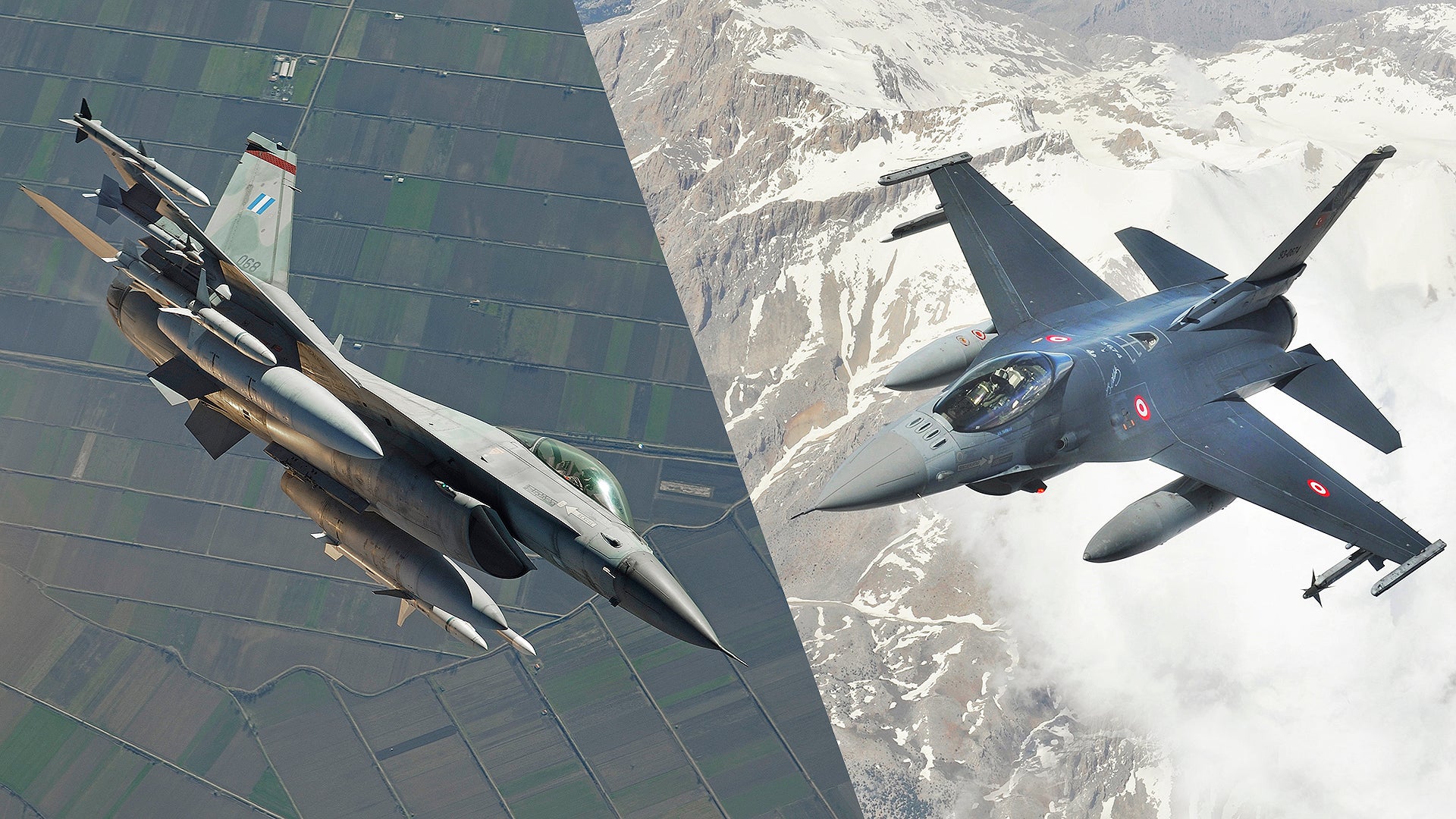Greece and Turkey have a long history of animosity despite both being NATO members. However, there’s a real concern that the current spike in tensions — mainly related to control of oil and gas reserves and maritime rights in the eastern Mediterranean — could escalate. If they do, the respective air arms of the two countries are likely to be heavily engaged, so it’s a good time to take a detailed look at their respective assets and how their capabilities compare.
It’s worth noting here that the Hellenic and Turkish Air Forces regularly spar over the Aegean Sea. Turkey and Greece broadly have a long history of confrontation, including an all-out war fought in support of competing factions in Cyprus in 1974. That independent Mediterranean island, which is still divided between areas under the control of ethnic Greek and Turkish Cypriots to this day, remains a focus of antagonism between the two countries. However, current developments in the region have caused alarm in both NATO and the European Union.
Latest developments
The background to the current dispute surrounds the race to exploit energy reserves in the eastern Mediterranean. The two countries have claims on overlapping areas containing undersea oil and gas fields. In July, Turkey announced it was sending its research vessel Oruç Reis to carry out a drilling survey in disputed waters off the coast of southwest Turkey, but close to the Greek island of Kastellorizo. The Greek military was put on alert and the vessel eventually left port on August 10, 2020.

“The illegal and provocative behavior of Turkey has a serious backlash not only to peace and stability in the eastern Mediterranean but to the cohesion of NATO and to its relations with the European Union,” said Greek Foreign Minister Nikos Dendias, in response to the Turkish drilling mission.
“Greece claims 40,000 square kilometers of maritime jurisdiction area due to this tiny island [Kastellorizo] and attempts to stop the Oruç Reis and block Turkey in the eastern Mediterranean,” declared Çağatay Erciyes, Director General at the Turkish Ministry of Foreign Affairs.
The build-up to the latest phase in the standoff included a collision between Greek and Turkish frigates on August 12, 2020. The Turkish warship involved was one of five escorting the research vessel Oruç
Reis. The Greek frigate Limnos made contact with its Turkish counterpart Kemal Reis and the resulting damage was apparently confirmed by photos published soon afterward in the Greek media.
Complicating matters, some of the recent exercises in the area have involved foreign participation, including French Air Force Rafale fighter jets that arrived at Souda-Chania Air Base on Crete for joint training with Greek F-16s on August 13, 2020. The French Ministry of Defense described the deployment as a “temporarily strengthening [of] their presence in the eastern Mediterranean.” Souda then received four F-16E/F Desert Falcons from the United Arab Emirates, which had touched down at the Greek base by August 27 to take part in further joint exercises.
On August 26, Greece began a naval exercise south of Cyprus involving forces from Cyprus, France, and Italy. At the same time, warships from Turkey and the United States were taking part in separate drills in the same area. The U.S. Navy has taken part in maneuvers with both the Greek and Turkish navies in recent weeks, including involvement from Greek F-16s and the U.S. Navy Arleigh Burke-class destroyer USS Winston S. Churchill.

As well as a war of words and aggressive acts between ships, there have been other examples of direct posturing, too. The Turkish Ministry of Defense released what it claims is footage from the head-up display (HUD) of one of its F-16 fighters showing an incident that occurred on August 27, 2020, in which six Greek F-16s were supposedly warded off by Turkish Vipers. According to a statement from the ministry, the Greek fighters launched from Crete and were heading towards southern Cyprus when they approached an area in which Turkey had previously declared a restricted zone for a naval exercise.
The Turkish Ministry of Defense said the Greek jets were “removed from the region” and local media reported that the Oruç Reis was also active in the area at the time. The supplied HUD footage shows F-16s in a turning fight at close quarters and includes several tone alerts indicating that the Turkish pilot’s AIM-9 Sidewinder air-to-air missile (AAM) was locked on to the opposing F-16. The full story behind the incident is unclear, but encounters of this kind are not uncommon over the contested waters of the Aegean. However, by posting the video now, the Turkish Ministry of Defense seems keen to display its willingness and ability to take on Greek airpower to protect its interests in the region.

The most recent altercations between Greek and Turkish forces, and the soaring rhetoric that has come with them, have been met with concern among the wider European Union, of which Greece is a member. The German Defense Minister, Annegret Kramp-Karrenbauer, has called for the situation in the Aegean to be “defused” and criticized the latest rounds of potentially provocative naval exercises staged by both countries in the area. Kramp-Karrenbauer’s words suggest there’s now a wider recognition that another incident could put Greece and Turkey on a more serious collision course again, including in the air.
NATO Secretary General Jens Stoltenberg spoke with Turkish President Recep Tayyip Erdoğan on August 28, 2020, to talk about developments in the eastern Mediterranean. Stoltenberg stressed dialogue and de-escalation and the two discussed deconfliction mechanisms to prevent further incidents. For NATO, any tensions between Greece and Turkey threaten the solidarity of the alliance, potentially diminishing its ability to confront common security challenges.
“We’re urging everyone to stand down to reduce tensions and begin to have diplomatic discussions” added U.S. Secretary of State Mike Pompeo. “It is not useful to increase military tensions in the region.”
After examining the background to the latest standoff, let’s look at the key combat aircraft types that make up the two countries’ respective air arms.
F-16
The two countries’ air forces are spearheaded today by Lockheed Martin F-16 Viper fleets, which have now recorded three decades of service in Greece and Turkey. In both cases, the fighter jets were primarily purchased to replace aging F-104 Starfighters and F-5 Freedom Fighters.
The Hellenic Air Force (HAF, or Elliniki Polemiki Aeroporia) received 170 F-16s of various types between 1989 and 2010 and, with a large-scale modernization program underway, the Viper will remain the backbone of the air arm for many years to come.
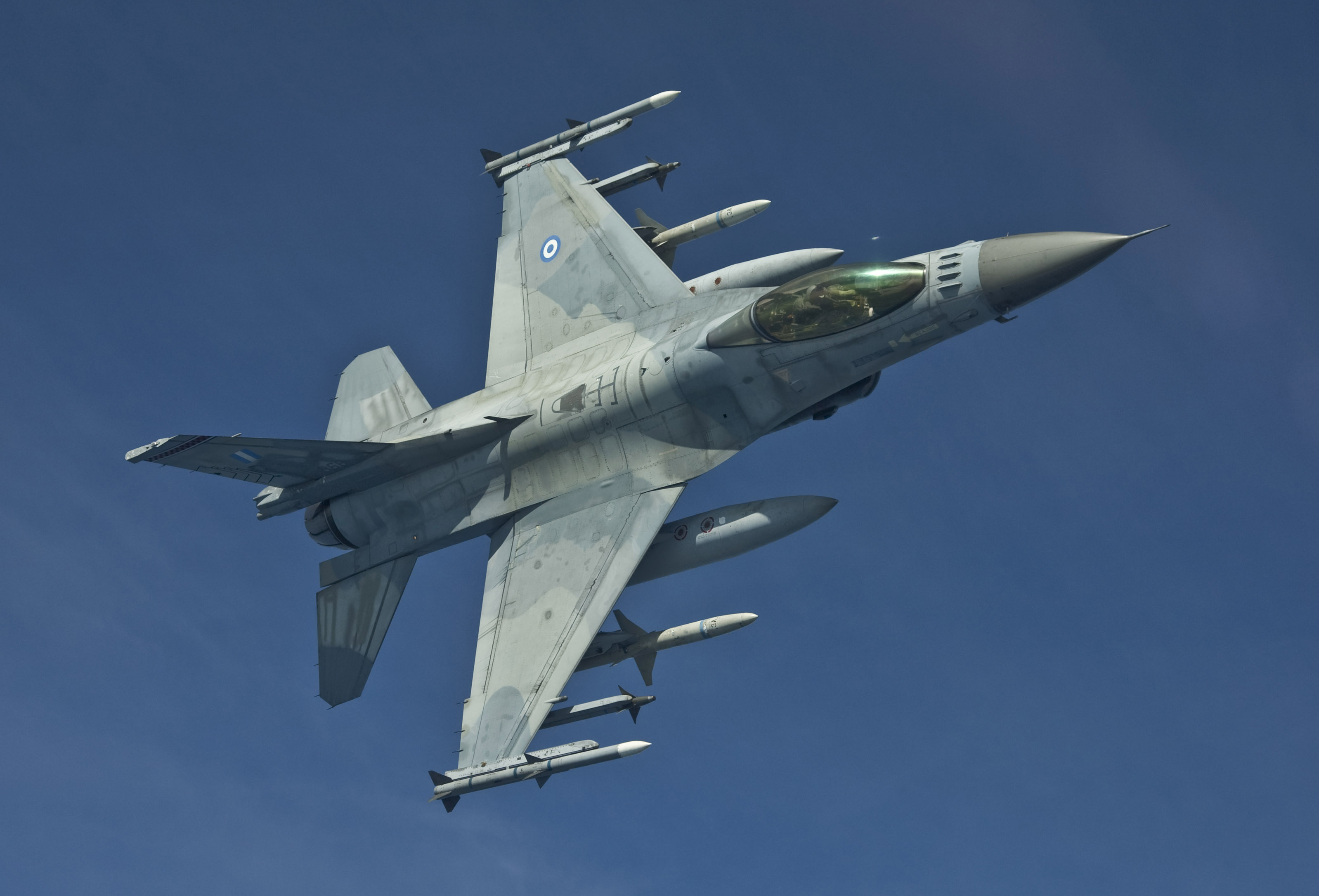
Greek Vipers were acquired via Foreign Military Sales (FMS) channels, through the Peace Xenia program, which included four distinct phases.
Peace Xenia I provided 34 single-seat F-16C and six two-seat F-16D Block 30 jets delivered between 1988 and 1990.
Peace Xenia II added another 32 F-16C and eight F-16D Block 50 aircraft. These jets are capable of night attack missions with the LANTIRN targeting pod and have AGM-88 High-speed Anti-Radiation Missile (HARM) capability, making them suitable for the suppression/destruction of enemy air defenses (SEAD/DEAD) mission.
Peace Xenia III provided 40 F-16C and 20 F-16D Block 52+ jets, all equipped with conformal fuel tanks for extended range. These were delivered between 2003 and 2004.
After scrapping plans to purchase the Eurofighter Typhoon, the Greek government instead opted for another Viper order, under Peace Xenia IV, to replace the veteran fleet of A-7H/TA-7H Corsair II attack jets. The deal covered 20 F-16C and 10 F-16D Block 52+ Advanced versions, also sometimes referred to as Block 52M aircraft, and was signed in December 2005.
The HAF’s aging F-16 Block 30s are now consolidated with a single squadron, 330 Mira, and the jets have undergone the Falcon UP service-life extension, work being undertaken locally by Hellenic Aerospace Industry (HAI).

Of the 150 or so Vipers still operational, the bulk is divided among eight operational squadrons based at Araxos, Lárisa, Néa Anghialos, and Souda-Chania, but the HAF also maintains a number of rotational detachments on islands in the Aegean. All HAF F-16 squadrons maintain a full air-to-air capability and undertake quick reaction alert (QRA) readiness duties to counter potential Turkish airspace violations, despite the fact that some are specialized air-to-ground squadrons.
The Collins Aerospace DB-110 reconnaissance pod is available to Greek F-16s for reconnaissance missions, and additional weapons options include the AIM-120C AMRAAM, AGM-154C Joint Stand-Off Weapon (JSOW), Joint Direct Attack Munition (JDAM), and — reportedly — Wind Corrected Munitions Dispensers (WCMD). Unusually, the HAF has opted for the pan-European IRIS-T as the primary short-range AAM for the Viper, rather than the AIM-9X Sidewinder.
Eyeing a longer-term modernization for its Vipers, Greece selected the F-16V upgrade that will bring 84 aircraft — all of them Block 52+ and Block 52+ Advanced jets — to Block 70/72 standard, including the AN/APG-83 Scalable Agile Beam Radar (SABR) with active electronically scanned array (AESA), Raytheon Modular Mission Computer, remodeled cockpit including the second-generation Joint Helmet Mounted Cueing System (JHMCS ΙΙ), and the Link 16 data link, among other enhancements. Most of the work will be undertaken by HAI in Greece. There have been suggestions that the remaining 38 Block 50 jets could also undergo an upgrade, bringing them to a so-called Block 50+ Advanced standard, but this hasn’t been contracted. The fate of the Block 30 aircraft is unclear, but they could be sold off, or perhaps used as aggressors for air defense training.
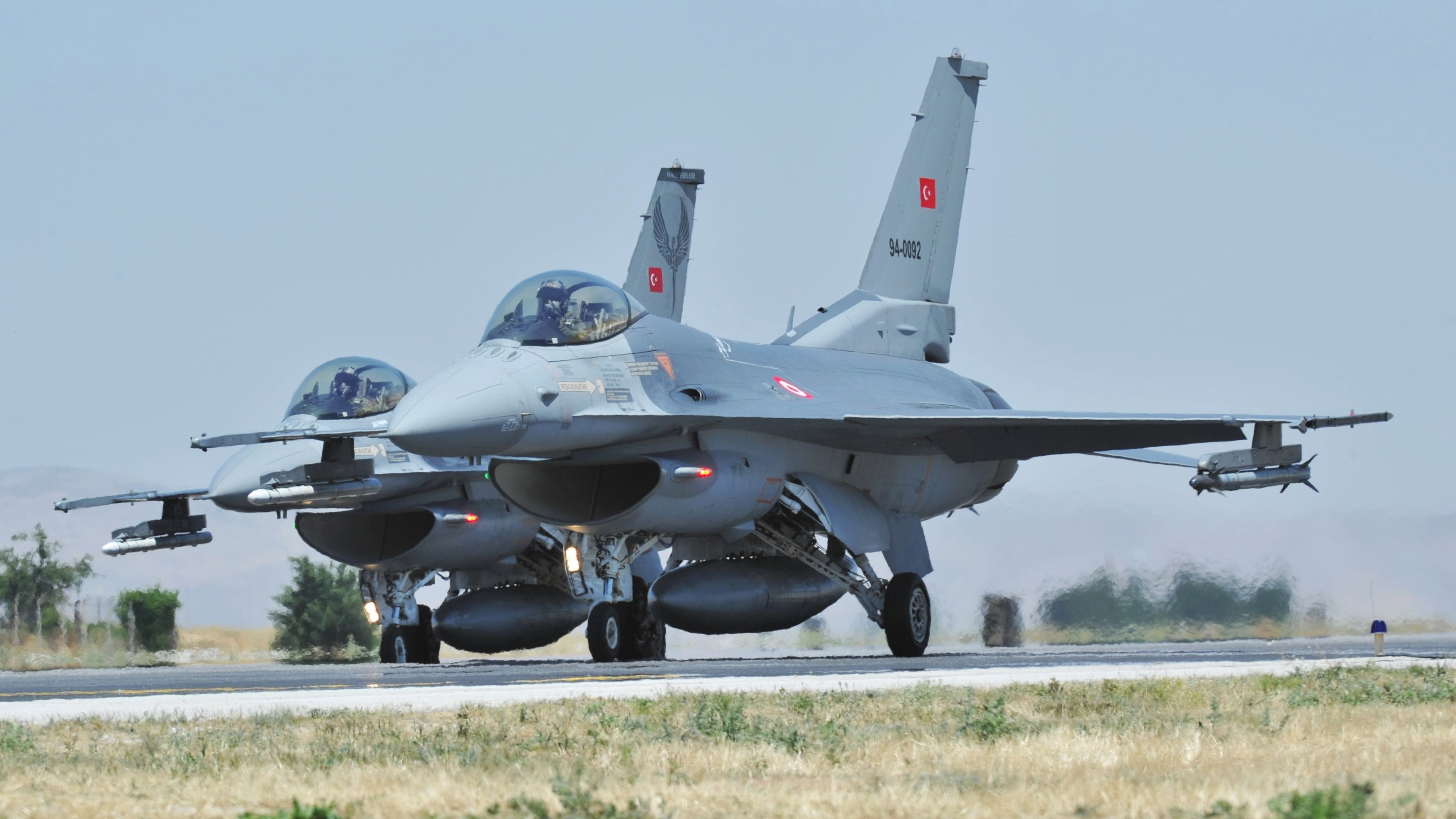
On the other side, the Turkish Air Force, or Türk Hava Kuvvetleri (THK), is the world’s third-largest Viper operator, with a total of 270 aircraft delivered in successively more capable Block 30, Block 50 and Block 50+ configurations.
Local industry also plays a significant part in the Turkish Viper program, with involvement from Turkish Aerospace Industries (TAI) from the outset, including local assembly of aircraft and production of center/aft fuselage sections and wings.
The Turkish Viper procurement took place in four phases: Peace Onyx I to IV.
Under Peace Onyx I, Turkey received 136 F-16Cs and 24 F-16Ds, of which the first 44 were completed to Block 30 standard. The next 116 aircraft within Peace Onyx I were Block 40-standard jets that included the provision for LANTIRN pods. Deliveries took place from 1987.
Peace Onyx II covered 60 F-16C and 20 F-16D Block 50 aircraft, which were delivered between 1996 and 1999. Like the HAF Vipers, Turkish F-16 Block 50s were provided with the AGM-88 HARM anti-radiation missile.
The Peace Onyx III contract provided another batch of 40 F-16C/Ds, intended as attrition replacements. These aircraft were delivered between 1998 and 1999.
Turkish F-16s have also been subject to the Common Configuration Implementation Program (CCIP) upgrade. As well as adding more sophisticated weapons and sensors, this improved logistics support and reduced life-cycle costs. Lockheed Martin provided a total of 163 CCIP kits for Turkey’s surviving F-16C/D Block 40/50s. After modernization, the aircraft featured APG-68(V)9 multi-mode radar, color cockpit displays and recorders, JHMCS, Link 16 data link, Sniper targeting pods, and new weapons, including the AGM-84K Joint Standoff Land Attack Missile — Expanded Response (SLAM-ER), AGM-154A/C JSOW, AIM-9X, and CBU-103/105 Wind Corrected Munitions Dispensers (WCMD). Other weapons available to Turkish Vipers include the AIM-120 AMRAAM as well as the AGM-65 Maverick TV-guided air-to-ground missile.
The most recent Peace Onyx IV program provided another 14 F-16C and 16 F-16D Block 50+ jets, which are known to be compatible with the 1,300-pound Roketsan Stand-Off Missile (SOM) for standoff precision strike, as well as other indigenous weapons. These aircraft were delivered between June 2011 and December 2012.
More recently, TAI has set about upgrading 35 of its oldest Block 30 Vipers. This is based around a service-life extension using kits supplied by Lockheed Martin. The status of this program is currently uncertain, with reports that the U.S. Congress may have blocked the contract in response to Ankara’s purchase of the S-400 air defense system.

Today, the THK’s F-16C/D fleet is operated by two squadrons at Balikesir, two squadrons at Bandirma, two squadrons at Diyarbakir, one squadron at Eskişehir, one squadron at Konya, and two squadrons at Merzifon. Units are assigned particular roles, among them air defense, SEAD/DEAD, tactical air support for maritime operations, close air support, reconnaissance, and aggressor.
Eskişehir is home to 113 Filo, a former RF-4E operator, which is assigned the DB-110 reconnaissance pod that is used with the F-16, four of these pods having been acquired.
F-16 inventory (this and subsequent similar data is provided by Flight International’s
World Air Forces 2020 publication):
Greece: 153
Turkey: 245
Mirage 2000
The Hellenic Air Force also operates the Mirage 2000 multi-role fighter, having acquired two distinct versions of the delta-wing jet. The first order was placed for 36 single-seat Mirage 2000EGs and four two-seat Mirage 2000DGs and deliveries began in 1988. Although being used primarily for air defense, these aircraft can be armed with the AM.39 Exocet anti-ship missile.

The HAF subsequently obtained a further 15 new-build Mirage 2000-5BG/EG (Mirage 2000-5 Mk 2) jets and brought 10 of its earlier aircraft to the same standard. One reason for adding the more capable Mirage 2000-5 Mk 2 may have been to match the beyond-visual-range capabilities of Turkey’s F-16s armed with AIM-120 AMRAAM missiles. The French-made jets are armed with the MBDA MICA missile, available in both radar-guided and infrared-guided variants.
The Greek Mirage 2000-5 Mk 2 jets also have an important long-range conventional strike role with the MBDA SCALP-EG cruise missile. A first airframe upgraded by HAI took to the air in 2005 and the first new-built fighters from Dassault began to arrive in Greece in 2007.
The HAF’s Mirage fleet is divided between two squadrons based at Tanágra, and the jets also conduct rotational detachments to islands in the Aegean.
Mirage 2000 inventory:
Greece: 42
F-4 Phantom II
As well as both flying the F-16, Greece and Turkey are among the last operators of the F-4 Phantom II. However, both countries have now retired their reconnaissance-configured RF-4 fleets.
The Hellenic Air Force has a single unit operating F-4E fighters that were upgraded to Peace Icarus 2000 standard under the Avionics Upgrade Program (AUP) between 1997 and 2001. Stationed at Andravida near the west coast of the Peloponnese peninsula, these jets are multi-role-capable, but it’s thought they now focus on air-to-ground missions.
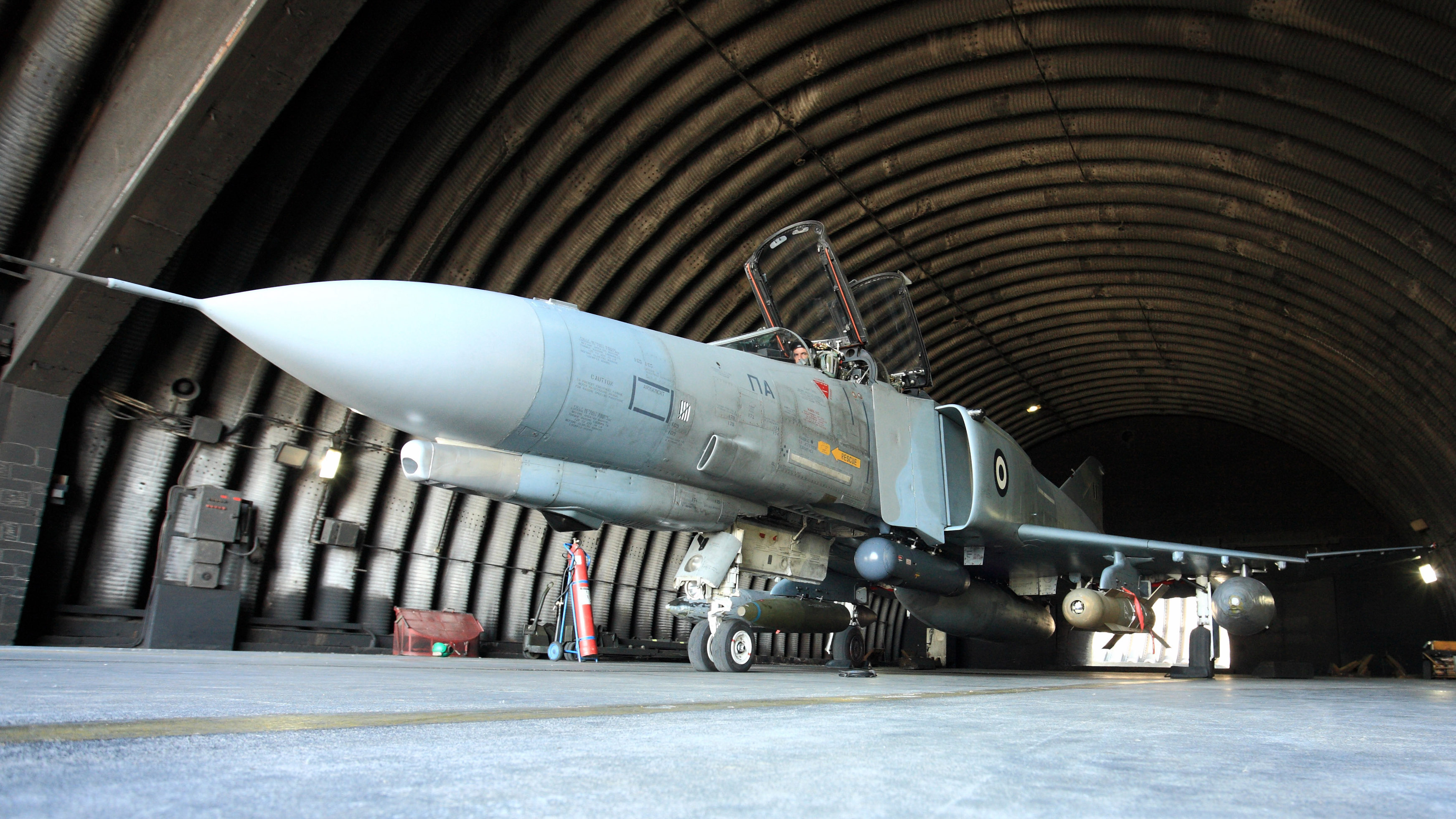
Among others, the AUP added AN/APG-65Y radar, inertial navigation system/GPS, AN/ALR-68(V)2 radar warning receiver, color multifunctional displays, a new head-up display, and hands on throttle and stick (HOTAS) controls. The Rafael Litening II laser targeting pod provides day/night precision targeting and weapons include laser-guided bombs, AGM-65 Maverick air-to-ground missiles, AIM-120 AMRAAM, and AIM-9 Sidewinder.
While 33 of the 36 Greek F-4Es that underwent the AUP remain operational, it’s thought that around 20 are actually available for operations at any given time.
Turkey’s Phantoms also underwent a significant mid-life upgrade, emerging as the F-4E Terminator 2020. The modernization involved Israel Aircraft Industries (IAI) and covered 54 airframes, including structural and avionics work. The upgraded avionics include an Elta EL/M-2032 multi-mode radar, digital glass cockpit, wide-angle HUD, and HOTAS controls. The jets can be armed with the Israeli-made Popeye standoff missile, as well as the indigenous Roketsan SOM for use against land and sea targets. Other stores include the HGK 500-pound INS/GPS-guided bomb, KGK 500-pound or 1,000-pound glide bomb, and the LGK-82 — an indigenous version of the 500-pound GBU-12 laser-guided bomb.

While both countries have made efforts to acquire new-generation fighters to modernize their fighter arms, Turkey was ejected from the F-35 stealth fighter program in response to its purchase of Russian-made S-400 air defense systems. Greece, meanwhile, has been identified as a possible F-35 customer too, and more recently unconfirmed reports have emerged in the Greek press that the country is examining a potential purchase of 18 Rafale multi-role fighters.
It was expected that the Turkish Phantoms would be retired with the arrival of the F-35, but with Ankara’s expulsion from the Joint Strike Fighter program, it’s possible the THK F-4s will continue in service until around 2030, by which time the next-generation TF-X fighter may be available. Today, the F-4Es serve with a single squadron at Eskişehir.
F-4E inventory:
Greece: 33
Turkey: 48
Airborne early warning and control
Airborne early warning (AEW) is a critical function for modern complex air operations and both Greece and Turkey contribute to NATO’s E-3A Sentry Component, which maintains a pooled fleet of the Airborne Warning and Control System (AWACS) aircraft at Geilenkirchen Air Base in Germany. The component also has forward operating bases at Aktion in Greece and Konya in Turkey. However, both countries have also established independent airborne early warning and control (AEW&C) capabilities.

Greece opted for its own AEW&C solution in 1999 when it ordered four Embraer EMB-145H aircraft from an Embraer, Ericsson, and Thales consortium. The aircraft are equipped with Ericsson Erieye AESA radar. These aircraft also have a signals intelligence (SIGINT) capability using Elettronica ALR-733(V)5 electronic support measures (ESM). The Greek aircraft has five workstations and the mission crew typically comprises a radar operator, mission commander, SIGINT specialist, and two weapons controllers.
Prior to the delivery of the EMB-145H aircraft, the HAF leased a pair of S 100B Argus AEW&C aircraft from the Swedish Air Force for a two-year period as an interim solution. The EMB-145H aircraft have been operational at Elefsis, west of Athens, since 2009. Using the Link 11 and Link 16 networks, the Embraers can exchange data with airborne, naval, and ground-based assets.
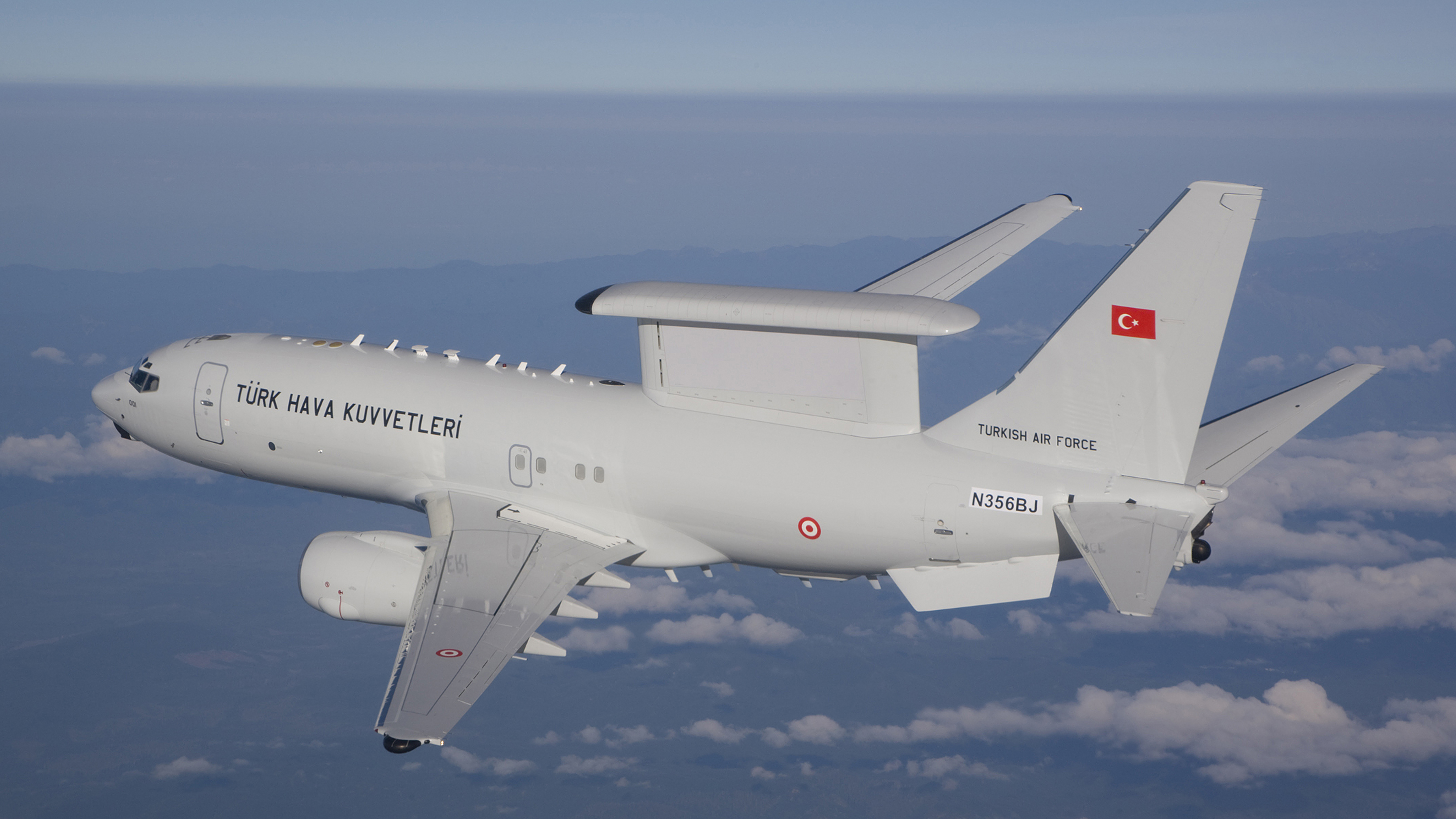
Turkey’s airborne early warning and control fleet is based around the Boeing 737 AEW&C that was acquired under the Peace Eagle program and is sometimes referred to by the local designation E-7T. The aircraft’s primary sensor is the Northrop Grumman Multi-Role Electronically Scanned Array (MESA) surveillance radar. The impetus to acquire the aircraft seems to have been to “fill the gaps” in airspace coverage over Turkey’s mountainous territory, where ground-based radars wouldn’t necessarily detect high-speed, low-flying targets.
The Boeing 737 AEW&C was selected in 2000 and four examples were eventually ordered, the first provided by Boeing, while the remaining three were outfitted by TAI. The project experienced a number of delays, including as a result of a breakdown in relations between Ankara and Israel, the latter which was to provide the Elta ESM system. The first aircraft was finally delivered to the air force in 2014, six years late. Today, the four aircraft are stationed at Konya and as well as working with fighters and monitoring airspace over the Aegean, the fleet has been used to monitor movements along the Syrian border including reportedly tracking Wing Loong II drones operating over Libya. Unlike the HAF’s EMB-145H, the 737 AEW&C can use inflight refueling to extend the duration of its missions.
AEW&C inventory
Greece: EMB-145H (4)
Turkey: 737 AEW&C (4)
Tactical transport and tankers
With most combat operations anticipated to take place regionally, the Hellenic Air Force has a fairly modest tactical transport fleet. It also lacks an organic air-to-air refueling capability, meaning fighters would have to be refueled on the ground, perhaps at forward-located island airstrips. The air force operates around seven older C-130B/H Hercules airlifters, plus two more H-models modified for electronic intelligence (ELINT) missions. Surviving Hercules underwent an Avionics Upgrade Program (AUP) between 2005 and 2010, including modifications to the INS/GPS, autopilot, weather radar, and digital engine controls. A partially glass cockpit and revised electronic warfare system were also included.

The HAF also flies eight more modern twin-turboprop C-27J Spartan tactical transports, delivered from 2005, although these have experienced limited availability in recent years. Mainly employed for airlift, the Spartans can also be used for medical evacuation and maritime patrol.
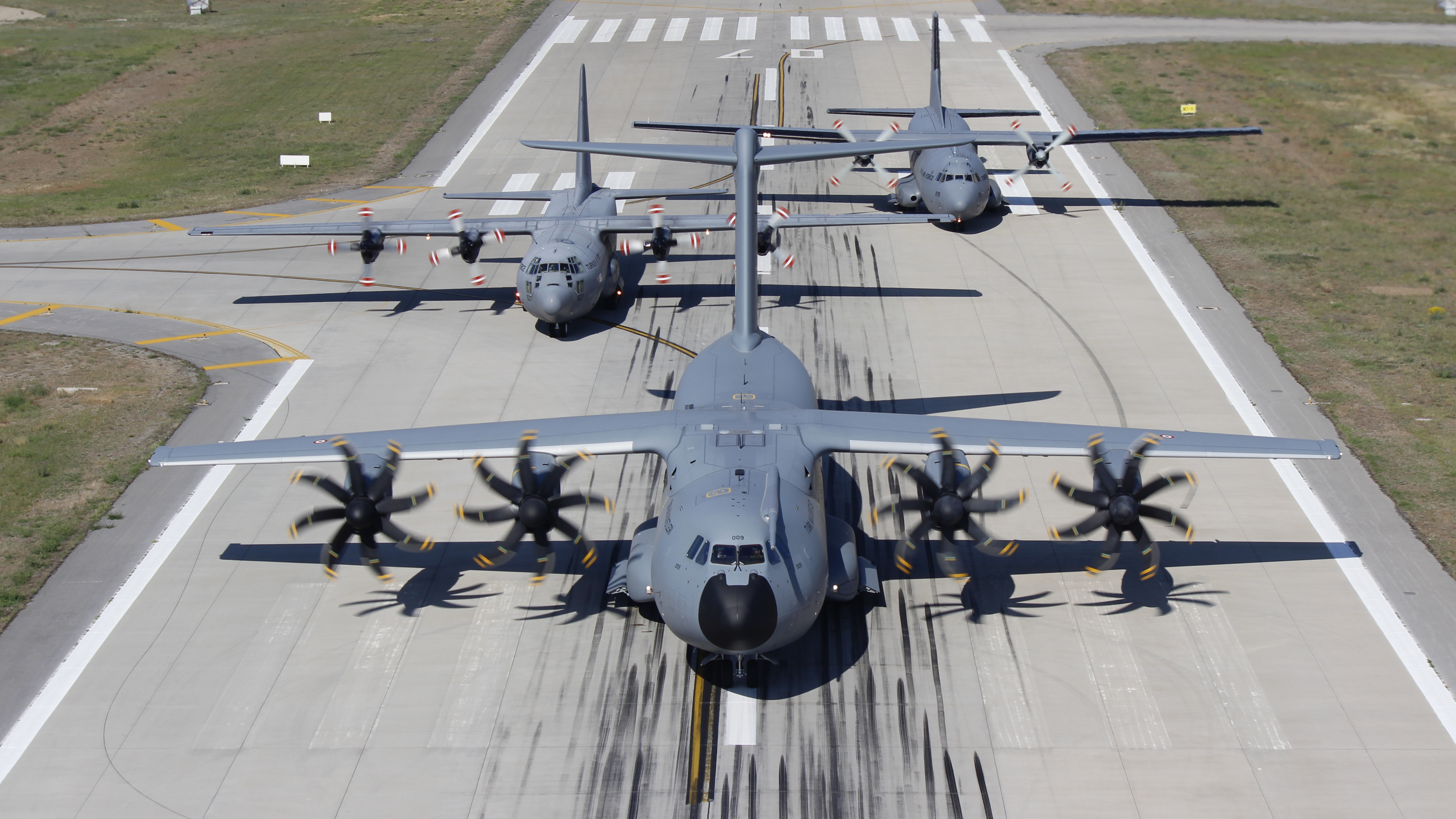
In contrast to the HAF, the Turkish Air Force has an aerial refueling capacity using seven KC-135R Stratotankers, which can deliver fuel via their boom or a boom-to-drogue adapter. For its transport needs, the THK relies upon around 16 C-130B/Es (airframes that are even older than those operated by Greece) and a diminishing number of Transall C-160Ds, as well as smaller CN235s, 42 of which were ordered and two of which have been adapted for ELINT duties.
The Turkish airlift fleet is also in the process of modernization through the induction of the A400M, and the last of 10 examples are scheduled to be handed over in 2022. Two C-160Ds have been adapted for communications jamming and can reportedly also undertake communications intelligence (COMINT) missions.
Tactical transport and tankers inventory
Greece: C-27J (8), C-130B/H (9)
Turkey: A400M (9), C-130B/E (16), C-160D (13), CN235 (42), KC-135R (7)
Maritime patrol
Both nations include fixed-wing maritime patrol aircraft (MPA) with anti-submarine warfare (ASW) capabilities and, although these are assigned to their respective naval air arms, there is some crossover as Greece’s P-3 Orion aircraft are operated by Hellenic Air Force flight crews working alongside naval mission crews.
The Hellenic Navy ceased operations with its five P-3Bs in September 2009 before a mid-life upgrade and modernization program was launched, Lockheed Martin being awarded a $142-million, seven-year contract covering reactivation of one aircraft plus hardware and software for the other four. The first refurbished P-3B was handed over by HAI in Tanagra in May 2019.
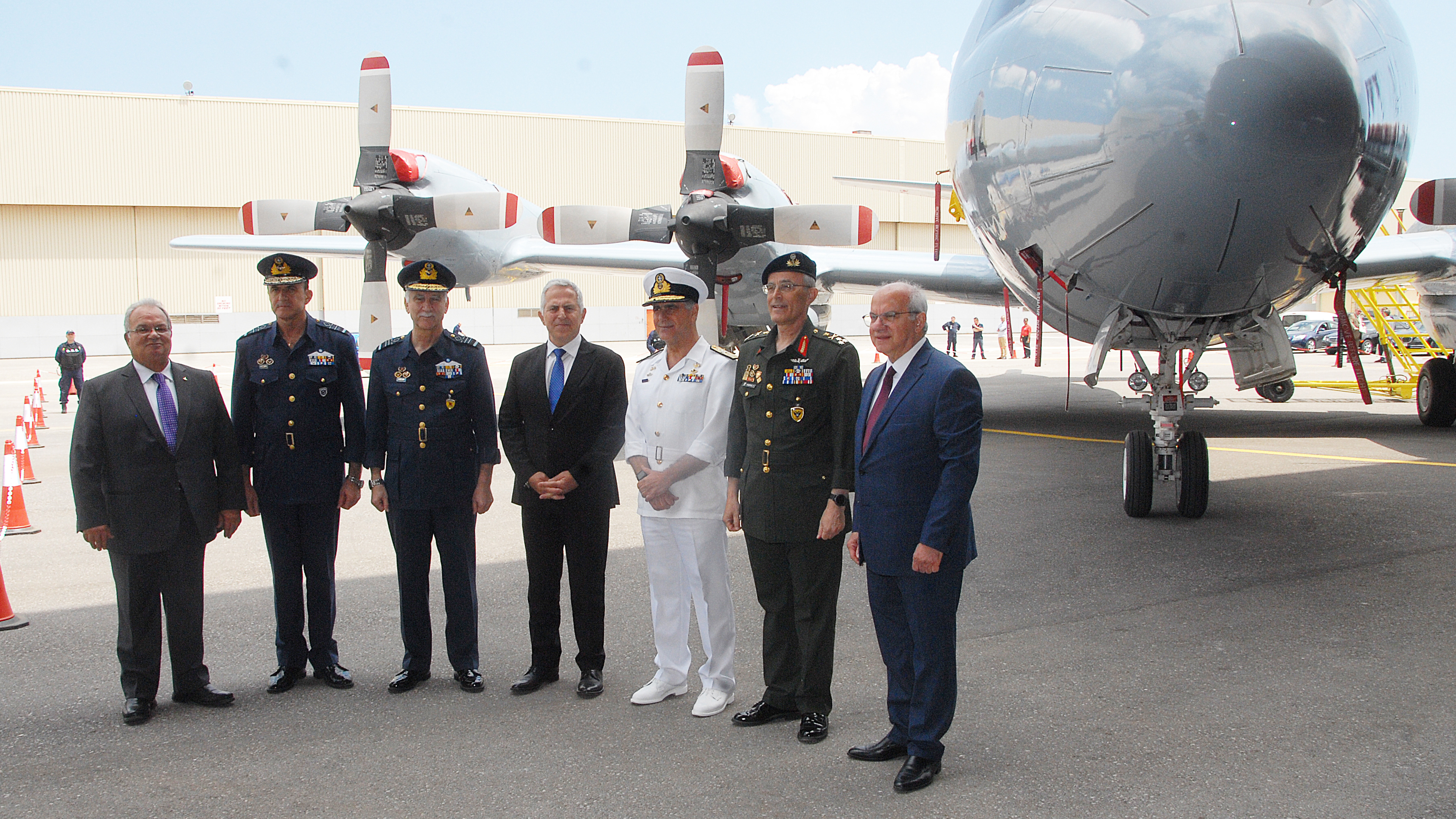
The aircraft are initially undergoing an interim upgrade, but it’s planned for them to be brought up to full P-3HN standard that should provide another 20 years of service. This also includes an indigenous tactical mission suite, the Maritime Mission Integration and Management System (M2IMS). The Greek Orion fleet is stationed at Elefsis. Once back to full strength, the P-3 will provide Greece with a long-range maritime patrol capability to monitor the Mediterranean, and especially the Aegean, including the Aphrodite gas field off the coast of Cyprus.
Turkish MPA capability rests not with its air force but with its naval air arm. After the retirement of the veteran S-2 Tracker in the early 1990s, the Turkish Navy was left without a fixed-wing MPA capability until the launch of the Meltem project at the end of that decade. This has provided six MPA-configured CN235M-100 twin turboprops, acquired under Meltem I, and then outfitted with the Thales AMASCOS-300 (Airborne Maritime Situation and Control System) under Meltem II. For ASW missions, the aircraft can be armed with Mk 46 torpedoes.
Finally, the Turkish Meltem III program is now providing a more advanced MPA capability, based on the ATR 72-600 twin-engine turboprop, outfitted by Leonardo. The work has been subject to delays, however, and the first of six aircraft was reportedly still undergoing final tests in April 2020, having made a first post-conversion test flight back in 2014.
Maritime patrol inventory
Greece: P-3B (1, plus 4 to be refurbished)
Turkey: CN235M-100 MPA (6)
Combat search and rescue helicopters
With significant coastlines and numerous islands to patrol, search and rescue is a critical element of both the Greek and Turkish air arms. As well as a dwindling number of venerable “Hueys,” in various versions, the air forces are each equipped with a smaller fleet of helicopters configured for combat search and rescue (CSAR). These would be tasked with retrieving any downed pilots during a conflict, but are also very active during peacetime, during which they provide an important night/all-weather rescue capability.

The HAF CSAR rotary-wing fleet includes a squadron of 12 AS332C-1 Super Pumas home-based at Elefsis, but with regular detachments to operational areas. Of the 12 Super Pumas, four are assigned to duties on behalf of the Hellenic Coastguard.
The THK operates around 20 of the more advanced AS532UL Cougar helicopter with detachments based throughout the country. The HAF Super Pumas are also understood to have a special forces support role and this may well extend to the Turkish Cougars, too.
It’s worth noting that both militaries have more rotary-wing capacity with similar capabilities spread throughout their army and navy branches.
Combat search and rescue helicopters inventory
Greece: AS332C-1 (12)
Turkey: AS532UL (21)
UAVs
After the HAF’s retirement of the RF-4E, some reconnaissance taskings have been taken over by a squadron operating the HAI Pegasus II unmanned aerial vehicle (UAV), based at Lárisa. Longer-term, the HAF will receive three maritime-configured Heron UAVs leased from Israel Aerospace Industries (IAI), which will provide a much-needed capability boost. According to the Greek Ministry of Defense, these drones will mainly be used for “border defense.”
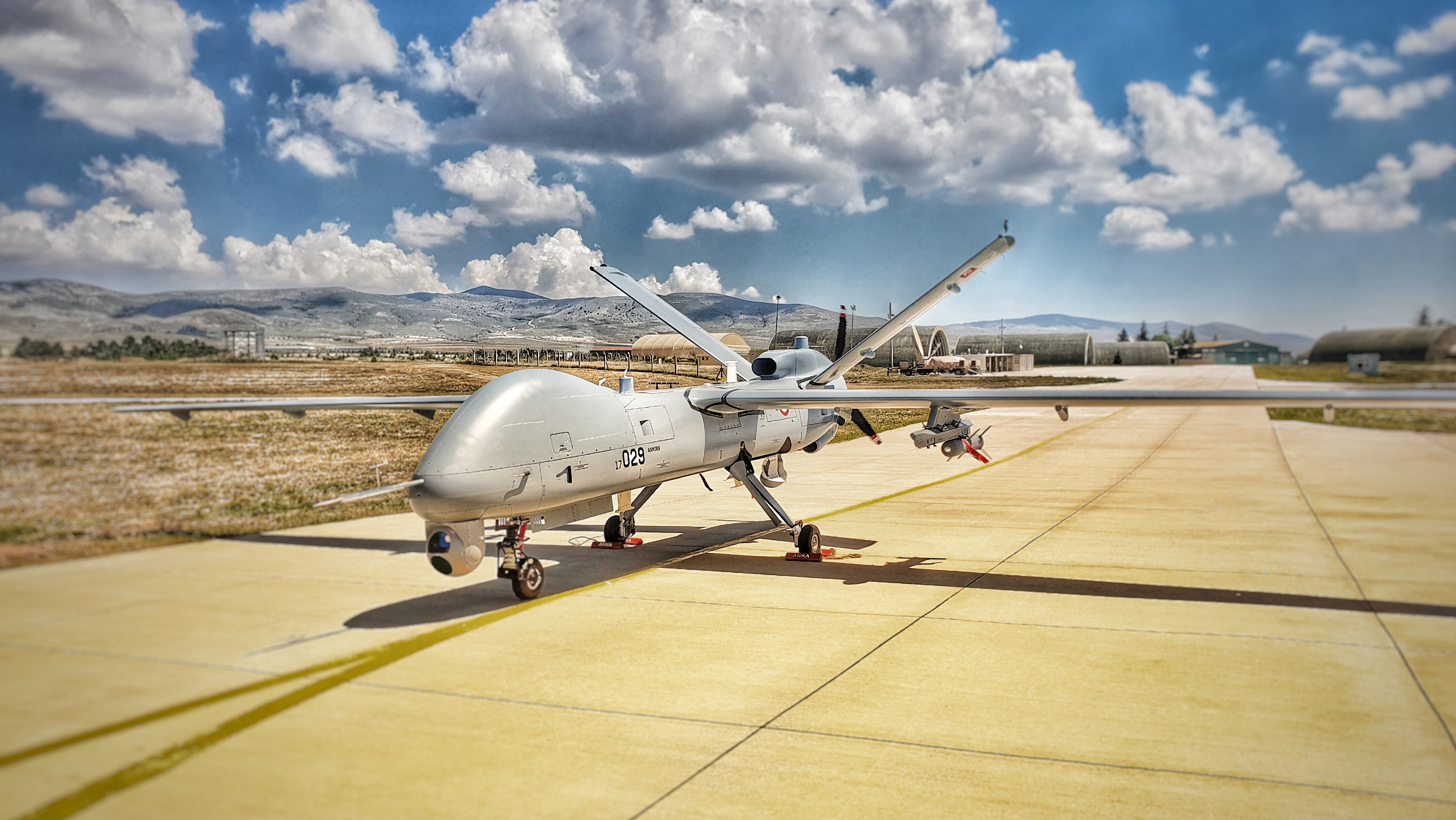
The THK already operates the IAI Heron, alongside indigenous drones. The center of its UAV operations is Batman Air Base, which is home to the Heron, and located closer to the Syrian border. Meanwhile, indigenous TAI Anka drones are also found at Incirlik, while a squadron at Malatya is reportedly responsible for the armed UAVs, including examples of the indigenous Bayraktar TB2.
How do they stack up?
The orders of battle of the Greek and Turkish air arms are fairly well balanced, although Turkey maintains a notable edge in transport and tanker assets, with a total of 36 medium/heavy tactical airlifters and tankers compared with 17 for Greece, which has no aerial refueling tankers.
Turkey also enjoys a considerable UAV advantage over its Greek counterpart. The Turkish Air Force has extensive combat experience with drones in Libya and Syria as well as a highly active local industry involved in producing UAVs for different applications.
In terms of fighters, the capabilities of the two air arms are nearly on a par, while Greece has 228 fast jets compared with 293 for Turkey. So, Turkey does have a numerical advantage, but that is just one aspect of a force’s ability to project tactical airpower. The availability of refueling tankers could be a critical advantage for the Turkish Air Force. These force-multipliers would provide Turkey’s larger fighter force with even more time on station and longer sustained sortie rates.
Combat helicopters — which would play a key CSAR role in times of conflict — also see Turkey edge out Greece in the numbers game, with 21 for the THK compared with 12 for the HAF.
Of course, these numbers only represent the total airframes understood to be in the inventory, and do not represent availability, or the numbers of sorties that could be generated in wartime. The other critical factor is pilot training, to which both air forces dedicate considerable resources, maintaining tactics and air warfare centers, plus a dedicated F-16 aggressor unit within the THK.
Decades of encounters over the Aegean have sharpened the combat capabilities of the Greek and Turkish air forces and the latest altercations are unlikely to see any major changes in posture, as the air arms continue to maintain their high levels of readiness. Greece and Turkey have been to the brink of war before, but since 1974, the various hostilities have never escalated beyond limited scenarios.

As we have mentioned, Greek and Turkish fighter jets have repeatedly clashed over the Aegean Sea without actually employing weapons, but the available accounts of those incidents tend to be highly partisan and it’s hard to find evidence of confirmed losses. An exception is the October 1996 encounter in which a Greek Mirage 2000 shot down a Turkish F-16D Block 40 using a Magic 2 air-to-air missile. While the Athens government said the Turkish jet had violated Greek airspace, Ankara claimed it had been on a training mission close to the Turkish mainland. The Turkish pilot died, while the co-pilot ejected and was rescued by Greek forces.
In another example of previous escalations, a Greek and a Turkish F-16C were apparently involved in a mid-air collision over the southern Aegean in May 2006. Two Hellenic Air Force F-16s had been scrambled to intercept a Turkish RF-4E reconnaissance jet escorted two Turkish F-16s. While the Turkish pilot was rescued by a civilian ship, the Greek pilot was reportedly killed.
As well as confronting Greek Vipers, the THK F-16 force has seen action against the Russian Aerospace Forces. An F-16C downed a Su-24M Fencer strike aircraft that had strayed into Turkish airspace during a mission over Syria in November 2015.
During Turkey’s Operation Spring Shield in March 2020, THK F-16s downed two Syrian Arab Air Force Su-24s, reportedly launching AIM-120C AMRAAMs from within Turkish aerospace. A Syrian L-39ZO was also downed during the same campaign. Meanwhile, air-to-ground missions have been flown by THK F-16s against the Kurdish Workers’ Party, a militant group better known by its Kurdish acronym PKK, which is based in the Kurdish regions of Turkey and Iraq.
Despite Turkey having much more experience of recent combat operations, there are potential negative factors, too. The attempted coup in Turkey in July 2016 had a significant effect on the air force, and on the F-16 units in particular — the coup-plotters had used F-16s in their efforts to oust President Erdoğan. In the wake of the coup attempt, many F-16 personnel were arrested or removed from their posts and the Viper wing based at Ankara-Akinci was disbanded, the aircraft from its three squadrons (141, 142, and 143 Filos) being distributed to other units.

The Turkish Air Force may also be hampered by the political fallout from the increasingly strained relations with the United States, and above all on Ankara’s insistence to pursue its S-400 purchase. Turkish officials have voiced concerns that this might lead to a wider arms embargo, which could have negative operational impacts, especially on the air force’s U.S.-supplied fleets.
Overall, Turkey’s quantitative edge in fighter airframes, albeit somewhat minor, paired with organic tanker support, would appear to give Turkey an advantage, although that is just in terms of hardware and numbers, and many factors are also at play, as we have discussed earlier.
While non-shooting skirmishes over the Aegean Sea are nothing new, it seems that the rhetoric surrounding the current dispute is becoming increasingly belligerent. Turkish Deputy President Fuat Oktay recently said that the Erdoğan government aims to take control of Greek islands close to Turkey. While statements of this kind are clearly engineered primarily for nationalist consumption, they also run the risk of potentially exacerbating an already precarious situation. Larger geopolitical shifts, including major energy reserves being potentially at stake and Turkey’s far more expeditionary minded and assertive military strategy aboard, also point to an elevated possibility that this dispute could take a darker turn.
Undoubtedly capable and held at high levels of readiness, the air forces of Greece and Turkey have planned and trained for combat in the Aegean theater for decades. Clearly, a full-scale conflict in the eastern Mediterranean could potentially be very costly for both sides.
Contact the author: thomas@thedrive.com
